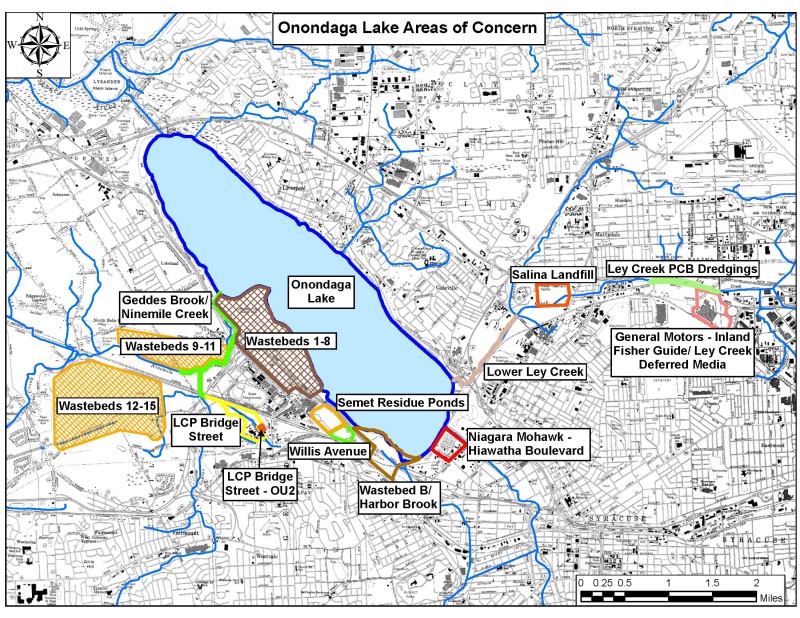
This is the best map I've seen describing all the areas around Onondaga Lake that are of concern to the health of the Lake (click on the map to view the larger version at DEC's website). It's hard to help a patient heal when you don't have a full diagnosis, right? I particularly like the inclusion of all of Onondaga Lake's tributaries. This includes sites that are being handled under other remedial programs within the Department of Environmental Conservation, in addition to the Superfund sites. I believe that this does not include sites that are being investigated under the voluntary cleanup program.
